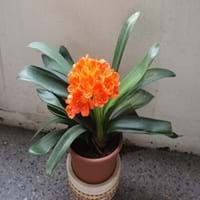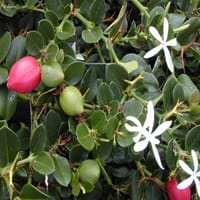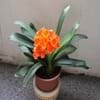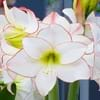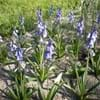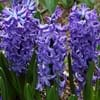Life Span
Perennial
Perennial
Type
Bulb or Corm or Tuber
Shrub
Origin
South Africa
Southern Africa
Types
Not Available
Carissa Carandas
Habitat
Temperate Regions, Woodlands
Coastal bush land, Sandy areas
USDA Hardiness Zone
9-11
9-11
Sunset Zone
21,22
H2, 16, 17, 18, 19, 20, 21, 22, 23, 24
Habit
Clump-Forming
Cushion/Mound-forming
Flower Color
Yellow, Red, Orange
White
Flower Color Modifier
Bicolor
Not Available
Fruit Color
Red
Hot Pink, Magenta, Purple, Red
Leaf Color in Spring
Dark Green
Dark Green
Leaf Color in Summer
Light Green
Dark Green
Leaf Color in Fall
Several shades of Green
Dark Green
Leaf Color in Winter
Light Green
Dark Green
Leaf Shape
Long Linear
Oval to roundish
Plant Season
Spring, Winter
Spring, Summer, Fall, Winter
Sunlight
Partial shade, Full Shade
Full Sun, Partial Sun
Type of Soil
Loam, Sand
Loam, Sand
The pH of Soil
Acidic, Neutral
Acidic, Neutral
Soil Drainage
Well drained
Well drained
Bloom Time
Early Spring, Spring, Late Spring, Winter, Late Winter
Indeterminate
Tolerances
Drought
Drought
Where to Plant?
Container, Ground
Ground, Pot
How to Plant?
Seedlings, Transplanting
Seedlings
Plant Maintenance
Medium
Medium
Watering Requirements
Water more in summer
Average Water Needs
In Summer
Lots of watering
Lots of watering
In Spring
Moderate
Moderate
In Winter
Average Water
Average Water
Soil pH
Acidic, Neutral
Acidic, Neutral
Soil Type
Loam, Sand
Loam, Sand
Soil Drainage Capacity
Well drained
Well drained
Sun Exposure
Partial shade, Full Shade
Full Sun, Partial Sun
Pruning
Remove damaged leaves, Remove dead branches, Remove dead leaves
Remove damaged leaves, Remove dead branches, Remove dead leaves
Fertilizers
fertilize in growing season
Equal amount of N,P,K
Pests and Diseases
Red blotch
Aphids
Plant Tolerance
Drought
Drought
Flower Petal Number
Single
Single
Foliage Texture
Coarse
Medium
Foliage Sheen
Glossy
Glossy
Allergy
Asthma, breathing problems, Itchiness
Mildly Toxic
Aesthetic Uses
Beautification, Landscape Designing, Showy Purposes, Used for decorating walls, fences, gates, hedges, etc.
along a porch, deck or patio, Ground Cover, small hedge
Beauty Benefits
Not Available
Not Available
Environmental Uses
Air purification, Food for insects, Prevent Soil Erosion
Air purification
Medicinal Uses
No Medicinal Use
Iron, Potassium, Vitamin C
Part of Plant Used
Flowers
Fruits
Other Uses
Decoration Purposes, Showy Purposes, Used as Ornamental plant
Cake, Jam, Jelly, Sauces
Used As Indoor Plant
Yes
Yes
Used As Outdoor Plant
Yes
Yes
Garden Design
Container, Feature Plant, Foundation, Houseplant, Mixed Border
Bedding Plant, Container, Edging, Edible, Foundation, Groundcover, Hedges, Topiary, Bonsai, Espalier, Tropical
Botanical Name
CLIVIA miniata
CARISSA macrocarpa 'Emerald Blanket'
Common Name
Clivia
Large Num-Num
In Hindi
Clivia
नेटाल बेर
In German
Clivia
Natal Plum
In French
Clivia
natal Plum
In Spanish
Clivia
Ciruela Natal
In Greek
κλίβια
Natal Plum
In Portuguese
Clivia
Natal Plum
In Polish
Clivia
Natal Plum
In Latin
Clivia
Natal Plum
Phylum
Magnoliophyta
Magnoliophyta
Class
Liliopsida
Magnoliopsida
Order
Asparagales
Gentianales
Family
Liliaceae
Apocynaceae
Clade
Angiosperms, Monocots
Angiosperms, Asterids, Eudicots
Tribe
Not Available
Carisseae
Subfamily
Amaryllidoideae
Rauvolfioideae
Number of Species
Not Available
Not Available
Difference Between Clivia and Natal Plum
If you are confused whether Clivia or Natal Plum are same, here are some features about those plants to help you choose better. Many people think that these two plants have the same characteristics, but one can see Clivia and Natal Plum Information and learn more about it. Fertilizers required for proper growth of Clivia are fertilize in growing season, whereas for Natal Plum fertilizers required are Equal amount of N,P,K. Hence, one should know the basic difference between Clivia and Natal Plum if you are planning to have them in your garden to enhance its beauty.
<
Flowering PlantsImportance of Clivia and Natal Plum
Want to have the most appropriate plant for your garden? You might want to know the importance of Clivia and Natal Plum. Basically, these two plants vary in many aspects. Compare Clivia and Natal Plum as they differ in many characteristics such as their life, care, benefits, facts, etc. Every gardener must at least have the slightest clue about the plants he wants to plant in his garden. Compare their benefits, which differ in many ways like facts and uses. The medicinal use of Clivia is No Medicinal Use whereas of Natal Plum is Iron, Potassium and Vitamin C. Clivia has beauty benefits as follows: Not Available while Natal Plum has beauty benefits as follows: Not Available.
Compare Facts of Clivia vs Natal Plum
How to choose the best garden plant for your garden depending upon its facts? Here garden plant comparison will help you to solve this query. Compare the facts of Clivia vs Natal Plum and know which one to choose. As garden plants have benefits and other uses, allergy is also a major drawback of plants for some people. Allergic reactions of Clivia are Asthma, breathing problems and Itchiness whereas of Natal Plum have Mildly Toxic respectively. Having a fruit bearing plant in your garden can be a plus point of your garden. Clivia has no showy fruits and Natal Plum has showy fruits. Also Clivia is not flowering and Natal Plum is not flowering . You can compare Clivia and Natal Plum facts and facts of other plants too.
